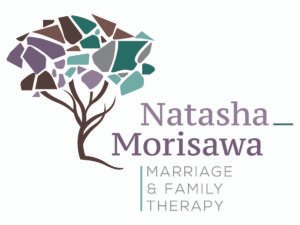Whether you’re beginning therapy for the first time or have years of therapy experience, it will be helpful to explore the time and space between therapy sessions. This is a time for growth and change towards the hopes and expectations you have for therapy and your life.
As you already know, therapy is a process that starts when you courageously decide to make changes in your life. That important process takes a substantial step forward when you engage in the therapeutic relationship with someone who can be emotionally and mentally present with you. Together you create a safe space to work on the things you came into therapy to address. Regularly attending therapy – plus treating the process with courage and compassion – promotes healthy change that will make a positive difference in your life.
There are so many opportunities in the days and moments of our lives to apply what we’ve learned in therapy so far. Here are some ways to make the most of that time.
- Make some time shortly after your therapy session to go over what feels important to remember. Save time immediately after your appointment or later that same day to reflect on that session. You may wish to write some notes in a notebook, journal, or just explore some uninterrupted time to think about what was most important to you during that session. Try answering these questions: What new understandings do I have about myself or this situation? What moments of clarity happened and about what topic(s)? Were there times during the conversation when I resisted my feelings or avoided certain subjects? What new questions do I have now?
- Notice any reactions you might have. The effects of therapy last beyond the time that you’re with your therapist. Feelings that come up in a session may come up again in your life and that may feel uncomfortable, particularly if you’re not used to allowing yourself to more fully feel the range of emotions. Your body may have a reaction as well. You may feel tiredness or notice tension in your body. It could be that you’ve had these symptoms all along and have needed to minimize and deny these sensations to get through the days of your life.By bringing your attention to your body and sensations during a therapy session, you’re more apt to be more aware of it in your entire life.
You may also feel a sense of lightness or calm that follows a session. Keep track of any reactions that concern you and bring them to your therapist’s attention in the next session. They may be a good source of information on your therapeutic journey.
- Try applying one or two things that might be new. If you’re expecting change in your life, then be willing to make some changes. Most significant change is slow and is made up of much smaller changes. Normalize trying new things even if you don’t know exactly how they will turn out. Change is a process. Be an active participant in it. Name one or two small things you can do differently in your week and then trying them out between your sessions is a great way to support therapy overall.
- Share new ideas, concepts, and thoughts with a trusted person. Connecting with a trusted friend or loved one through life transitions can be helpful to remind yourself of the support you have around you. When we share these new ideas, it helps us to integrate these concepts into our daily life. You might find that others struggle with similar issues that you’re dealing with. Remember: You don’t have to do this alone. Reaching out to someone and asking for time and energy to talk for 15-30 minutes will create an equitable space for connection. Letting your trusted person know they don’t need to solve your problem(s), but instead just listening is what you want will be helpful as well. Take some of that time to do some reflective listening in return. You never know what you may learn about yourself and others.
- Build a toolbox with the new tools to practice. A toolbox is useful for collecting those tools you pick up in the process of change. Some tools you pick up in therapy might be easy for you at first and don’t need much practice to incorporate into your life. Others may take more time, or you might not be ready to use them yet. You can use a notebook or journal to write down reflections about new tools you’re trying or keep a digital folder for videos, articles, and links you find helpful. Having a running note on your mobile device is a convenient way to store your tools and strategies to review in the future.. You may want to have easy access to breathing exercises, music playlists that help you regulate your mood, lists of new coping skills you’re learning, reminders of new habits and habit trackers, questions to ask yourself when you get stuck, journal prompts, quotes or poems that inspire you, and pictures that help ground you.
Another idea of a toolbox or emotional first aid kit can be a converted empty mint container where you add small items to help ground yourself when you’re dysregulated: a picture of a loved one, a small stone to hold in your palm, some chewing gum, a small envelope of your favorite spice to smell, etc.
- Live your life. The goal of therapy is to integrate back into your life what you learn between and during your sessions. Some changes are noticeable and emerge quickly, others take time to take root. Putting yourself in new situations involves allowing yourself to explore different choices and try new things. You are connecting the person you are now with the person you are becoming.
Identify things that make you feel alive. Do you love music but haven’t listened deeply in a while? When was the last time you visited your favorite place outdoors and went for a walk? Been wanting to paint, sing, or dance? Is there a museum you wish to visit? Did you enjoy playing basketball, golf or taking a yoga session? What ways can you add something that makes you feel alive this week?
- Prepare for the next session First step is always to make sure you record and remember when your next session is scheduled. If you can, set aside plenty of time during your therapy day. This should include enough time before to get present (“grounding”) and review important topics to discuss to make the most out of the session. Time after your session to reflect, practice plenty of self-care, or just have enough time to transition gently back into your daily life.
Take time to reflect on the moments and experiences between sessions. What is working for you these days? What didn’t work so well? Are there any themes or patterns that have come to your attention lately? Therapy is a process, so try to see beyond the content of your daily life and take a bird’s eye view. Where are your “growing edges,” those parts of you that are expanding in ways that you would like to see grow more?
Feel free to add to this list as you find what helps you make the important changes in your life. This is your journey, these are your intentions, and your process will be uniquely yours to choose. You’ve got this!



